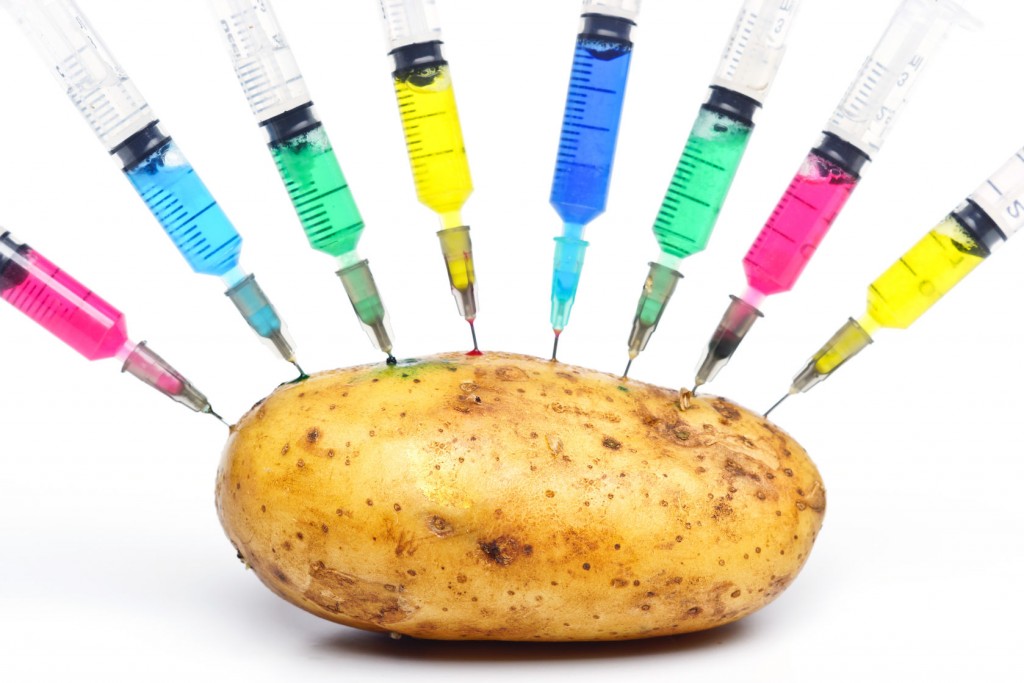Questioning GMOs
In the last decade, organic food’s popularity has skyrocketed. Even if you’re new to the health and fitness world, you’re probably familiar with the concept of “raw food.” Apparently, it’s supposed to be the best kind of food you can eat. Of course, that raises an important question: if organic food is the best, then what does all the other food we eat qualify as?
Sure, it’s cheaper. But what exactly are we getting for our money? Today, we’re going to dive into the highly-controversial topic of genetically modified organisms (or GMOs). Not only are we going to break down how GMOs are made and whether or not GMOs are actually safe, but we’ll even tackle the issue that everyone thinks about before they go shopping: is organic food really worth it?
Cut From a Different Cloth
To understand the differences between GMOs and organic food, it’s important to look at how each category is prepared. The process that goes into creating and preparing our food is something that deserves attention now more than ever.
To create a meaningful contrast, let’s look at how certified organic food is prepared. For the sake of consistency, take a common staple of the American (and bodybuilder) diet: chicken. Right from the beginning, there are certain requirements that certified organic chicken farms need to satisfy.
To bear the honor of being “certified organic,” the birds must be raised organically no later than two days after they hatch. Then, they must be fed certified organic feed for their entire lives. By definition, that feed cannot contain any antibiotics or genetically-engineered grains. Their feed also can’t have any animal by-products in it.
Still not impressed? Well, certified organic chicken farms are expressly prohibited from giving their birds any sort of drug. Certified organic chicken farms are also expected to give all their birds outdoor access, which promotes an active lifestyle for the birds (which means healthier chicken for you).
The way that your standard chicken is raised is a little different. Generally speaking, if the chicken you’re eating isn’t certified organic, it’s probably going to be subject to quite a different process.
Considering that the only federal mandate against chicken is injecting them with hormones, it’s basically open season on your food. This article isn’t about scaring you, but rather to educate you about what goes into the food you might be consuming. Genetically modified chickens are generally suffering from bronchitis, failed organs, and a weakened immune system.
There are a few other gruesome details, but you get the idea. Organic food is prepared with the intention of mimicking the natural environment and growth of chickens. On the other hand, the goal of most regular farmers is getting as much meat as possible, for the least amount of money. Great for business, but not so great for us.
Organic Food is Here to Stay
Of course, this all sounds like hippie talk. “Who cares how it was made?” some might say. “As long as I get enough meat every day, I don’t care how I get it!” Honestly, there might be some merit to that argument… if we didn’t take a look at the nutrient density of the two types of foods.
But… we did. According to a study published in the Journal of Clinical Therapeutic, organic foods are found to have higher levels of certain nutrients (vitamin C, iron, magnesium and phosphorus being the most notable) and lower levels of pesticides.
Organic food is clearly more expensive than conventional meat and produce. And, while there are a few studies showing a higher level of nutrient density, the general consensus in the scientific community is that the data is inconclusive. At this point, it’s all about your personal preference. If you don’t care about where your food comes from, then don’t bother with organic food. But, if you like having things as close to wild and fresh as you can, then organic food is your best bet.


























